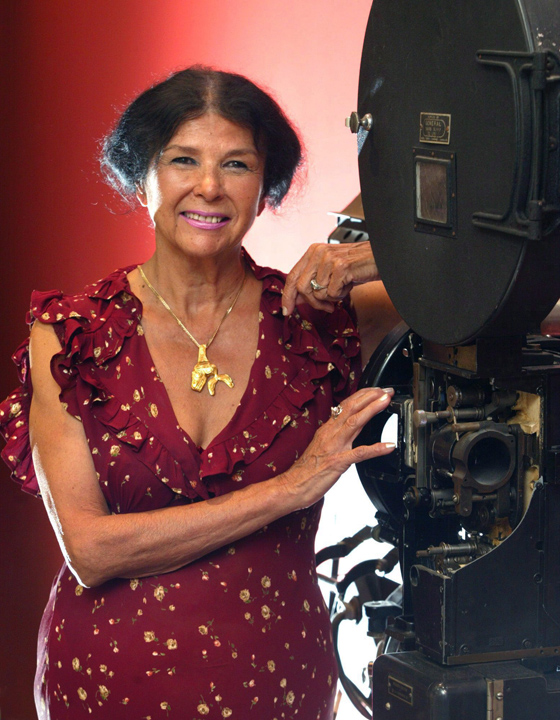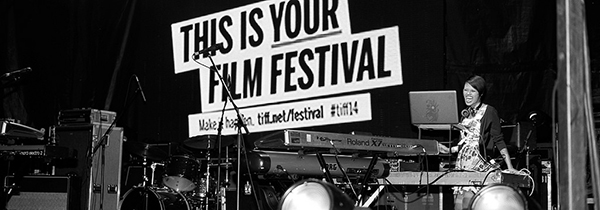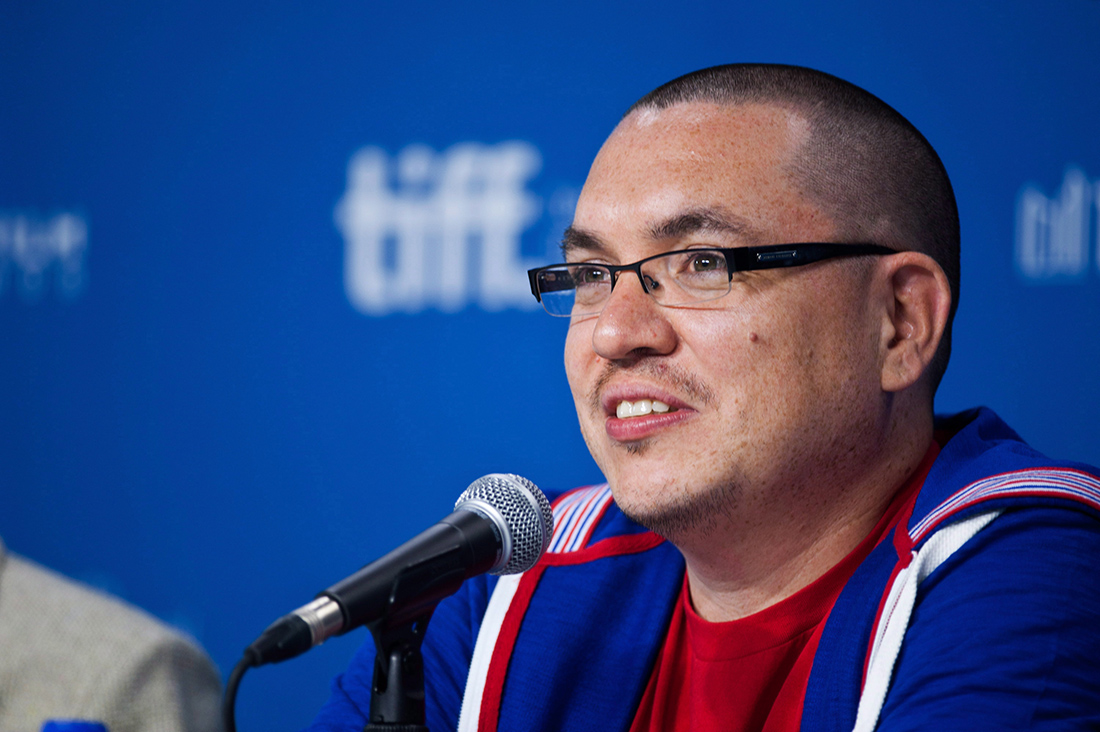The imagineNATIVE Film + Media Arts Festival is one of the world’s largest film festivals devoted exclusively to screen-based works created by Indigenous artists. It is a registered charity under its legal entity, The Centre for Aboriginal Media. The Toronto-based festival has grown to attract tens of thousands of attendees annually and plays an active role in furthering representation for Indigenous cinema at festivals worldwide.
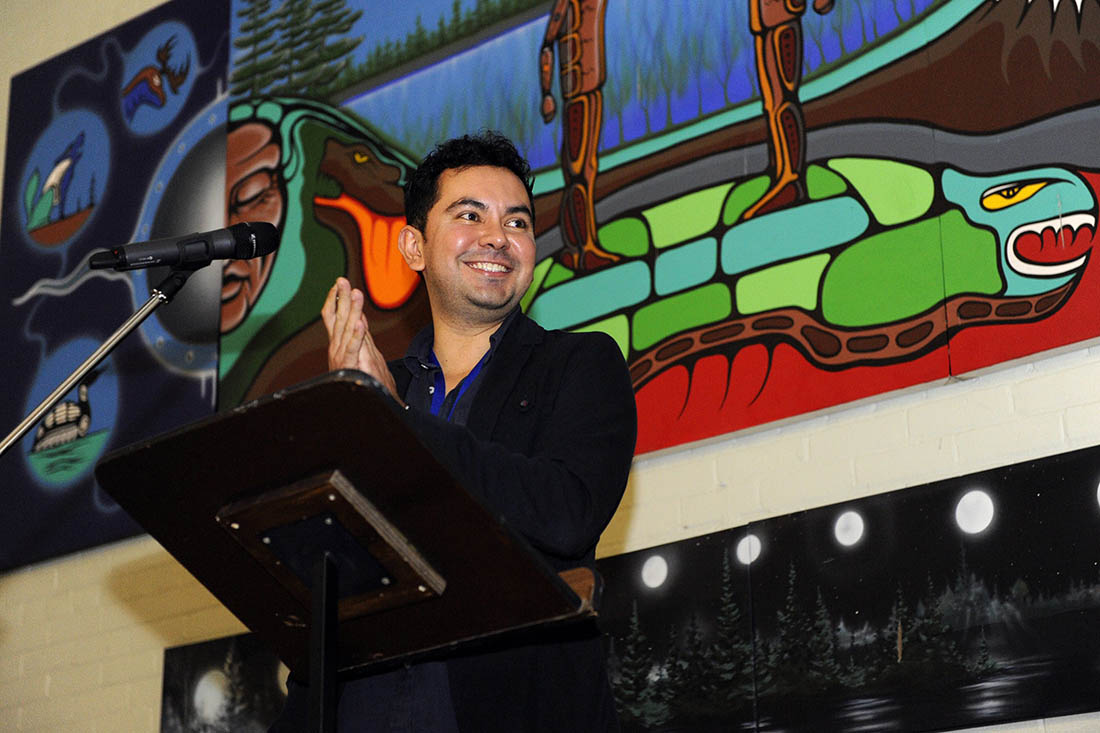
Context
imagineNATIVE was founded in 1999 by Cynthia Lickers-Sage and the Toronto-based not-for-profit distributor Vtape with the help of community partners. It grew from the Centre for Aboriginal Media, which was co-founded in 1998 by Vtape, Cynthia Lickers-Sage and the Woodlands Cultural Centre, with founding patron Roberta Jamieson. The Centre for Aboriginal Media was preceded by the Aboriginal Film & Video Art Alliance, which was in existence from 1993 to 1998. That partnership sought to raise awareness for films and videos by Indigenous creatives. Outreach for the project began when video artist Zachary Longboy visited Indigenous communities across Ontario to learn how they were telling stories through images. Lickers-Sage took over the project in 1995. In 1998, the catalogue imagineNATIVE: Aboriginally Produced Film & Video was published. It was a major catalogue indexing Indigenous film and video works, along with resources to connect artists and communities. The catalogue was primarily focused on creative works by Indigenous directors and artists. Lickers-Sage also held workshops in Indigenous communities to restore the visual storytelling processes she was researching.
The first edition of the imagineNATIVE Aboriginal Film + Media Arts Festival ran in Toronto from 9 to 12 September 2000. The event was scheduled to coincide with the busy Toronto International Film Festival (TIFF). The hope was that imagineNATIVE could capitalize on attention given to the star-studded festival. The inaugural imagineNATIVE screened 42 films by Indigenous talents. It opened with the world premiere of Kent Monkman’s Blood River at the University of Toronto’s Innis Town Hall. It included retrospectives of films by Canadian directors Alanis Obomsawin and Loretta Todd. The festival built Indigenous protocols and ceremonies into its events from the beginning. One screening included an introductory haka by Maori artists. Lickers-Sage served as festival director. She expressed hope that imagineNATIVE’s success would inspire festivals of TIFF’s stature to include more Indigenous perspectives in their selections and staffing.

Early Years
In 2001, imagineNATIVE shifted out of TIFF’s shadow with screenings and events running 21–24 November. The festival’s second year celebrated a major milestone for Indigenous cinema. Zacharias Kunuk’s Atanarjuat: The Fast Runner, the first dramatic feature produced in Inuktitut, opened the event and won Best Film. In 2002, imagineNATIVE shifted its events to late October, which would host its spot on the festival calendar for years to come. The 2002 festival introduced imagineNATIVE’s Spotlight On series. That year, the focus was on films related to Russia. It also included a spotlight on three women curators — Dana Claxton, Shelley Niro and Shawna Sunrise — illustrating imagineNATIVE’s consensus-based programming.
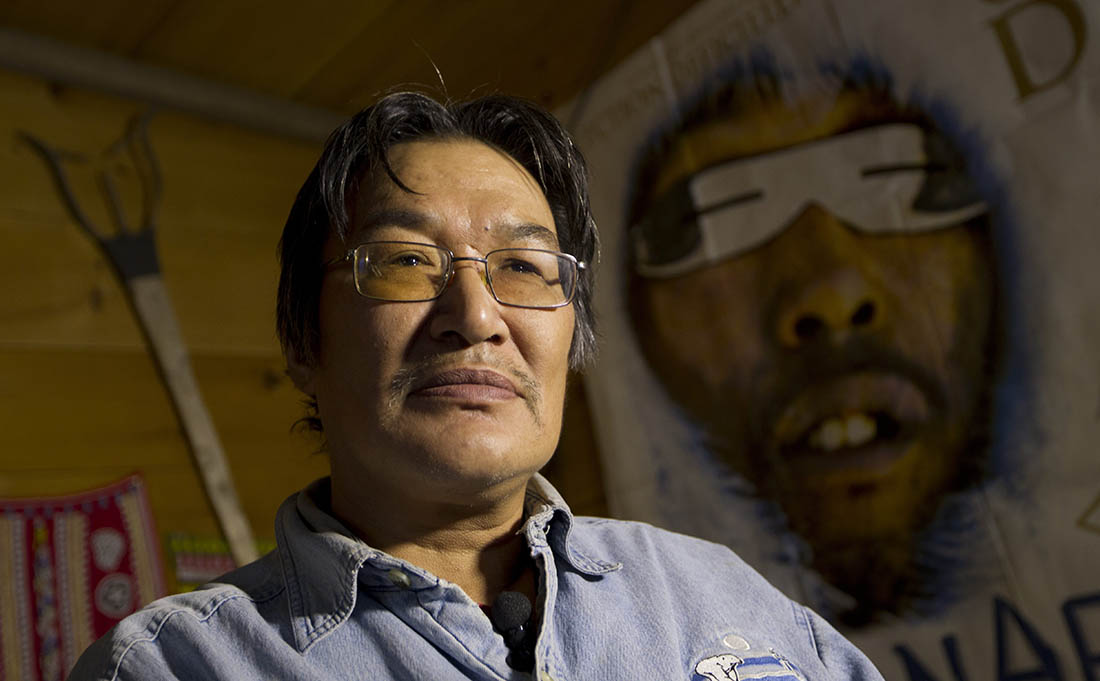
Leading up to the 2003 event, renamed imagineNATIVE Film + Media Arts Festival, Lickers-Sage departed her role as artistic director. Richard Story assumed the position with the assistance of a programming committee. By 2003, imagineNATIVE was drawing nearly 2,000 attendees annually. The 2004 festival saw the appointment of Jason Ryle as chair of the board of directors. Additionally, Danis Goulet was the executive director, a role that oversaw the programming as well. The 2004 festival opened with The Land Has Eyes, the first feature directed by an Indigenous person from Fiji. It also included a retrospective of Alanis Obomsawin’s documentaries.
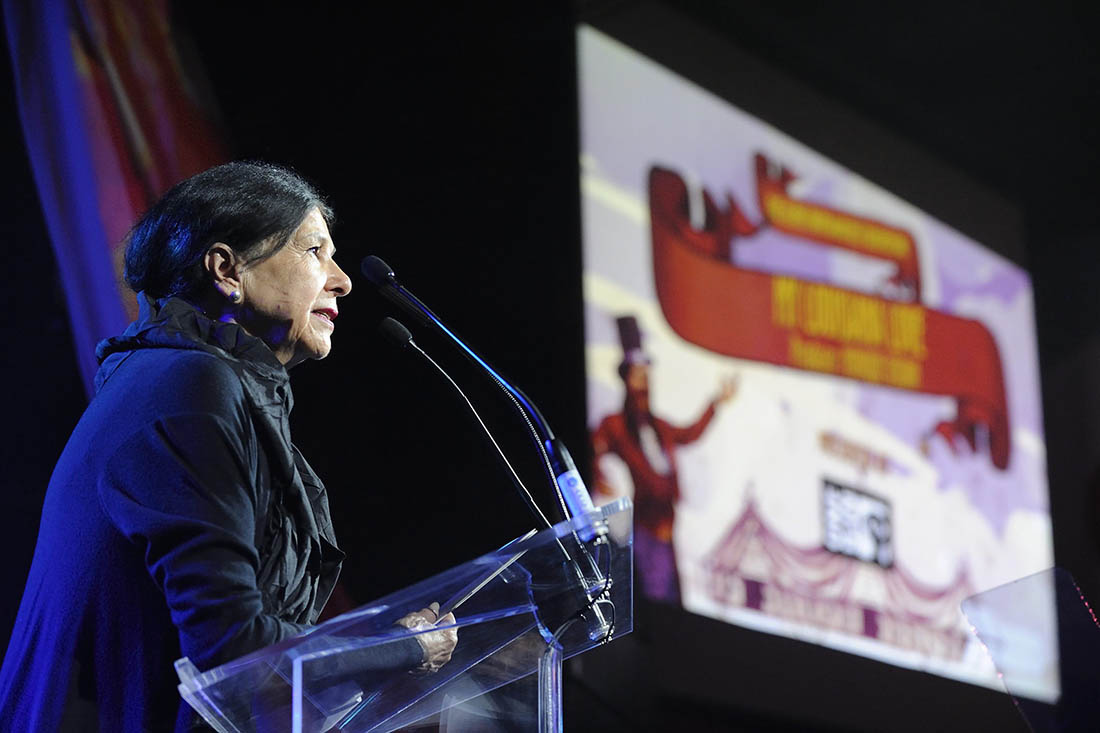
Growth Years: 2005 to 2016
Subsequent years saw major growth for imagineNATIVE and its cultural impact. In 2005, the festival was recognized by the Canadian Race Relations Foundation for its innovative approach towards combatting racism. The festival doubled its attendance from 8,000 patrons in 2006 to 16,000 in 2007 thanks to a partnership with the Royal Ontario Museum (ROM). The ROM featured “site specific works, notable works, and live performances” alongside pieces from the museum’s collection.
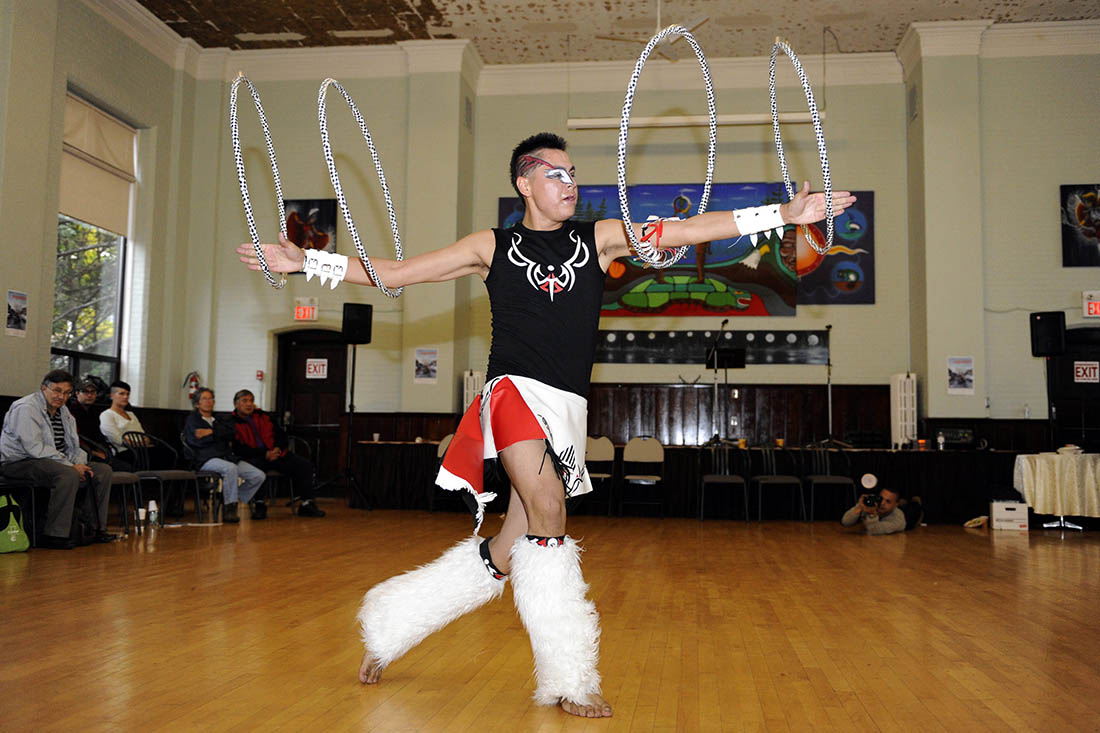
In 2010, Jason Ryle took over the executive director position. This role was held previously by Kerry Swanson and Danis Goulet from 2007–09. The 2011 festival shifted screenings to the newly opened TIFF Bell Lightbox (now TIFF Lightbox). This venue has served as imagineNATIVE’s main screening venue since then. By 2012, imagineNATIVE was having a sizable impact both locally and globally. That year, the festival contributed an estimated $5 million to Toronto’s economy. By 2013, the Toronto Star declared it the “world’s largest” showcase for Indigenous filmmakers.
The festival continued to honour Indigenous talents with the creation of the August Schellenberg Award of Excellence in 2015 (see August Schellenberg). Named after the late actor, recipients of the “Augie” include Tantoo Cardinal, Michael Greyeyes and Gary Farmer.
2017 – Onwards
In 2016, reflecting the growth of the festival, leadership duties were again divided between two directors. Jason Ryle shifted to artistic director and Ariel Smith became executive director. The following year, 2017, was a pivotal year for imagineNATIVE. The festival played a leading role in furthering Indigenous perspectives amid the celebrations of Canada 150. The festival marked the occasion with the virtual reality project 2167. This project was a work of Indigenous futurism that included pieces by Danis Goulet, Kent Monkman and Scott Benesiinaabandan. It envisioned Canada’s 300th anniversary through Indigenous perspectives. That year also saw the launch of the imagineNATIVE Institute. The institute expanded the festival’s industry components into year-round professional development opportunities for Indigenous artists.
Ryle returned to the executive director position in 2019, and Niki Little joined as artistic director. That year, imagineNATIVE became an Oscar-qualifying festival. This meant that the winner of the festival’s dramatic short prize became eligible for the Academy Award for Best Live Action Short. The distinction was a first for Indigenous festivals. By 2019, imagineNATIVE reached an audience of 30,000 attendees.
The COVID-19 pandemic forced imagineNATIVE to pivot to a virtual festival for its 2020 edition. Despite that challenge, 153 artists were represented with 59 per cent of the 2020 lineup driven by female creatives. The festival returned to hybrid events in 2021. This approach brought imagineNATIVE to communities outside Toronto and continued the extended reach afforded by the virtual festival. Prior to the 2021 festival, Ryle stepped down as executive director and was replaced by Naomi Johnson. In 2024, imagineNATIVE announced that it would forgo the October edition of the festival and return in June 2025 to align events with Indigenous People’s Month.
Programming
Throughout its history, imagineNATIVE has celebrated the diversity of formats for telling stories. In addition to films and video works, each edition of the festival included new media, interactive works, art installations and, in later years, virtual reality (VR) and podcasts, among other formats. The 2001 festival experimented with new forms of programming, including a CD-ROM presentation accompanied with a performance by artist Dana Claxton and peyote singers. Since 2002, imagineNATIVE has regularly featured an International Spotlight series to emphasize the works of a specific region or Indigenous community. Spotlight series have included Australia (2004), the Pacific Islands (2006), Navajo filmmakers (2007), Nepal (2009), Khoi-San (2011), the Mapuche Nation (2012) and Sámi filmmakers (2015). The festival has regularly screened works by filmmakers including Alanis Obomsawin, Zacharias Kunuk, Zoe Leigh Hopkins, Jeff Barnaby, Danis Goulet, Lisa Jackson, Kent Monkman, Darlene Naponse, Sterlin Harjo, Warwick Thornton and Taika Waititi.
Industry Components
The festival has included industry programming since its inaugural edition, including workshops, seminars, panel discussions and professional development. March 2008 saw imagineNATIVE create the Embargo Collective. This initiative advanced Cynthia Lickers-Sage’s efforts to return tools for storytelling back to artists. It invited seven filmmakers, three from Canada and four international, to produce short films that reflected distinct visions as well as the collaborative spirit that inspired them. The resultant films screened at imagineNATIVE 2009, including short films from Zoe Leigh Hopkins, Helen Haig-Brown and Taika Waititi, who won an Oscar a decade later for Jojo Rabbit. The short film Savage by Lisa Jackson won a Genie Award for Best Live Action Short Drama. The 2014 festival included a follow-up edition of the Embargo Collective.
The growth of imagineNATIVE’s industry side has made the festival a key business event for Indigenous cinema. By 2013, a reported $200,000 in distribution deals were being made annually on the industry side of the festival. Internationally, imagineNATIVE has managed Indigenous representation at the European Film Market in Berlin since 2015.
Prior to the foundation of the imagineNATIVE Institute in 2017, the festival administered numerous grants and development programs for Indigenous artists. The institute allowed it to expand such programs year-round as these funding opportunities continued. A major partnership with Netflix in 2019 saw the streamer commit $25 million to develop and support Indigenous artists through imagineNATIVE and two other Indigenous cultural organizations. The funding from Netflix was jeopardized in 2024 as part of Netflix’s response to the Online Streaming Act. Additionally in 2024, imagineNATIVE acquired the US media artists database Kin Theory.
Pathways and Protocols
The 2019 publication of imagineNATIVE’s On-Screen Protocols & Pathways: A Media Production Guide to Working with First Nations, Métis and Inuit Communities, Cultures, Concepts & Stories realised the festival’s goal to facilitate change in the industry. The document used feedback from Indigenous filmmakers to develop guidelines for ethical production concerning Indigenous stories and communities. It was inspired by Screen Australia’s protocols for Indigenous production. The aim was to replace the perpetuation of negative and simplified stereotypes with positive and authentic representation.
The guide serves as a living document and not as a fixed guide for assisting non-Indigenous creatives in telling Indigenous stories. It emphasizes a circular foundation of respect, responsibility, consent and reciprocity. The guide notes the complexity of gaining consent for sharing narratives that were passed down through traditions of oral storytelling. It also emphasizes the importance of active collaboration, an engaged respect for the land and its inhabitants, fair compensation and an understanding that asking for consent means acknowledging and accepting that consent may not be granted. A key principle of the document is “nothing about us without us.” This concept means that Indigenous communities must play an active role in the telling of Indigenous stories and provide informed consent throughout all stages of production.

 Share on Facebook
Share on Facebook Share on X
Share on X Share by Email
Share by Email Share on Google Classroom
Share on Google Classroom
